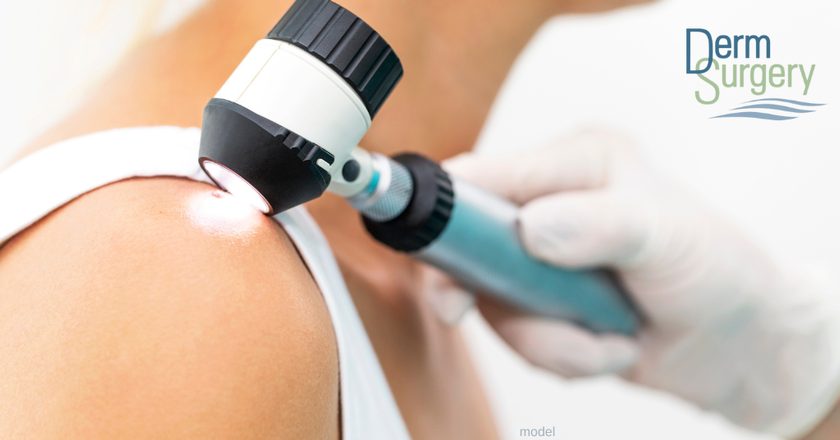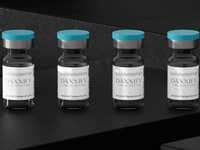Is Skin Cancer Curable? Your Top Questions Answered

During the carefree, languid days of summer fun and beachside vacations, the last thing people want to be thinking about is skin cancer. It’s easy to dismiss it as a cautionary tale, but for up to 10,000 Americans each day, a diagnosis is a new and unsettling reality.
That’s according to the Skin Cancer Foundation, which estimates that at least 1 in 5 Americans will develop skin cancer by the age of 70. In fact, more Americans are diagnosed each year with skin cancer than every other type of cancer combined.
If you or someone you know is facing a skin cancer diagnosis, know that you’re not alone. From answering questions such as “Is skin cancer curable?” to providing guidance on identifying and treating skin cancer, we hope to empower you with the information you need to be (and stay) safe and healthy.
What Are the Different Types of Skin Cancer?
There are two main types of skin cancer (melanoma and non-melanoma). Each is named for the type of skin cell from which it originated.
Melanoma
Melanoma is the most aggressive form of skin cancer and arises from melanocytes, which produce the pigment in our skin. It only makes up 1% of skin cancer cases but carries a significant risk of metastasizing (spreading to other areas of the body).
Non-Melanoma Skin Cancers
- Basal Cell Carcinoma (BCC) – BCC accounts for around 80% of skin cancers and mainly affects the head (face, ears, scalp), neck, shoulders, chest, and back. It is slow-growing and unlikely to metastasize.
- Squamous Cell Carcinoma (SCC) – Making up the remaining 20% or so of skin cancer cases, SCC typically manifests on sun-damaged, burned, chemically-damaged, or scarred skin. It usually appears on the lips, ears, head, shoulders, hands, and forearms, though areas such as the anus and vagina may also be affected. While SCC doesn’t usually spread, it can metastasize in up to 5% of cases.
- Merkel Cell Cancer (Neuroendocrine Carcinoma) – A very rare, fast-growing type of cancer, Merkel cell cancer typically affects the head and neck and arises from hormone-producing cells. It is 40 times rarer than melanoma, affecting up to 3,000 Americans each year.
Is Skin Cancer Curable?
When caught early, skin cancer patients have an excellent prognosis. For cancers such as BCC and most cases of SCC, the malignant cells are contained to the affected lesion, meaning the cancer can be effectively eliminated once these areas of skin are removed.
In cases where the cancer has metastasized, a more aggressive, long-term approach will be required. A patient may need a combination of radiation and chemotherapy to slow the spread of the disease and eliminate the cancer.
Keep in mind, however, that once you have had skin cancer, there is a strong likelihood that it can come back. For non-melanoma cancers, the recurrence rate is 30% to 50% within the first 5 years, while melanoma can come back up to 25 years after the first treatment.
How Do You Know if You Have Skin Cancer?
One of the most popular guidelines on how to spot skin cancer is the ABCDE approach:
- Asymmetry: Is one half of the mole larger than the other?
- Border: Are the borders clean and even, or are they irregular?
- Color: Is the mole uniform in color, or is it patchy? Does it have more than one color?
- Diameter: Is the mole larger than a pencil eraser (around 6mm)?
- Evolving: Has the mole changed over time?
The ABCDE approach is most often used to identify melanoma. Non-melanoma skin cancers can be spotted early on by looking for:
- An open sore or wound that doesn’t heal or that may come back
- A rough or scaly patch of skin that may crust over and ooze
- A wart-like growth with a raised edge and a bleeding or itching center
- A bump or nodule that appears shiny
- A patch of reddish skin that may cause pain, itchiness, or irritation
- A scar-like patch with a waxy, shiny appearance and irregular borders
While skin self-checks are still an important part of dermatologic wellness, nothing compares to the trained eye of a professional. We highly encourage you to schedule an annual mole check with a board-certified dermatologist or physician assistant to rule out any suspicious spots, keep an eye on possible precancerous lesions, and, if needed, take quick, decisive action.
What Is the Treatment for Skin Cancer?
Following a visual inspection of any concerning moles or skin lesions, your dermatologist may perform a biopsy to collect a small tissue sample for further testing. If the results reflect the presence of cancerous or precancerous cells, your treatment may include:
- Photodynamic Therapy (PDT): PDT pairs a topical photosensitizing agent with a light treatment to destroy precancerous lesions.
- Actinic Keratosis Treatment: The precancerous form of SCC, actinic keratosis can be treated with liquid nitrogen, topical creams, or PDT.
- Mohs Micrographic Surgery: Mohs surgery is performed at DermSurgery by a fellowship-trained Mohs surgeon. The surgery removes all traces of cancerous tissues, leaving the healthy surrounding tissue intact.
What Type of Skin Cancer Requires Mohs Surgery?
Mohs surgery is the preferred treatment method for BCC and SCC skin cancers. It can also be used to treat Merkel cell cancer and melanoma. However, in certain cases, an excision (removal of the tumor and a wider margin of surrounding skin) is more appropriate.
How Do They Remove Skin Cancer in Mohs Surgery?
The Mohs surgeon (trained in dermatologic and reconstructive surgery as well as pathology) adopts an extremely precise, conservative approach to skin cancer removal. They will mark the visible borders of the cancerous lesion and use a scalpel to delicately scrape off a surface layer of tissue.
This layer is then examined under a microscope for any traces of cancer cells. If cancer cells are found, the next layer of affected skin is removed and re-examined until the surgeon has eliminated all traces. The wound is then reconstructed with sutures, a skin flap, or skin graft. Healing typically takes 1 to 2 weeks.
Curious about Mohs surgery for skin cancer? We answer some of the most common questions about this procedure in our related blog post.
Preventing & Addressing Skin Cancer
When it comes to skin cancer, prevention is always the best approach. Wearing broad-spectrum sunscreen every day, limiting your sun exposure, and scheduling a regular skin exam to check and monitor any areas of concern are important steps for skin wellness. To learn more about how DermSurgery can help you treat and prevent skin cancer, please request a consultation or call us at (713) 581-3972.
















